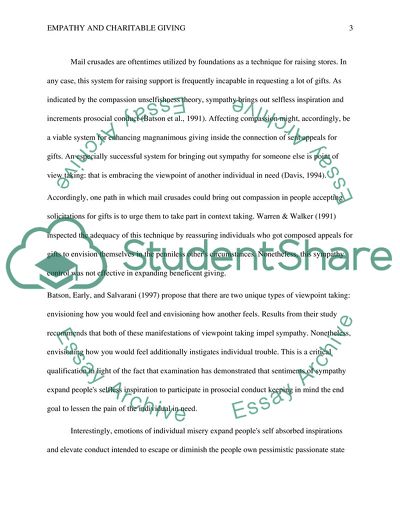Cite this document
(Does Fostering Empathy Increase Charitable Giving Report, n.d.)
Does Fostering Empathy Increase Charitable Giving Report. https://studentshare.org/psychology/1874571-does-fostering-empathy-increase-charitable-giving
Does Fostering Empathy Increase Charitable Giving Report. https://studentshare.org/psychology/1874571-does-fostering-empathy-increase-charitable-giving
(Does Fostering Empathy Increase Charitable Giving Report)
Does Fostering Empathy Increase Charitable Giving Report. https://studentshare.org/psychology/1874571-does-fostering-empathy-increase-charitable-giving.
Does Fostering Empathy Increase Charitable Giving Report. https://studentshare.org/psychology/1874571-does-fostering-empathy-increase-charitable-giving.
“Does Fostering Empathy Increase Charitable Giving Report”. https://studentshare.org/psychology/1874571-does-fostering-empathy-increase-charitable-giving.


